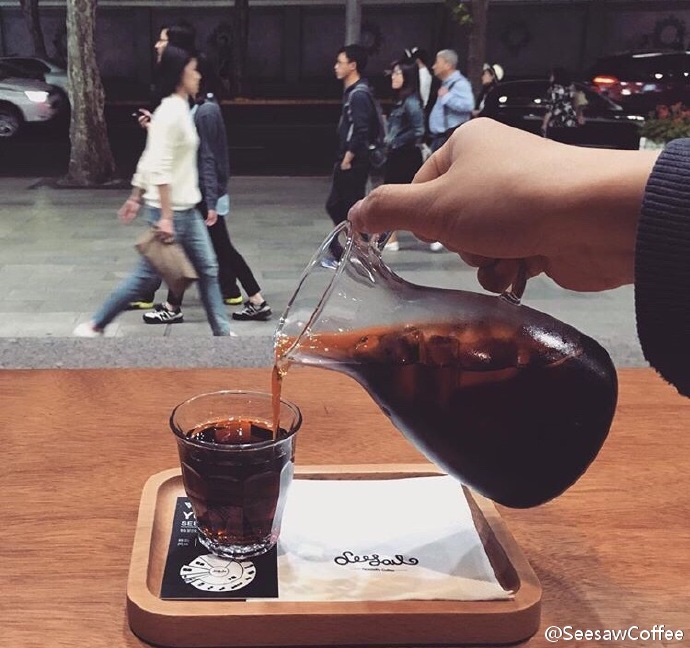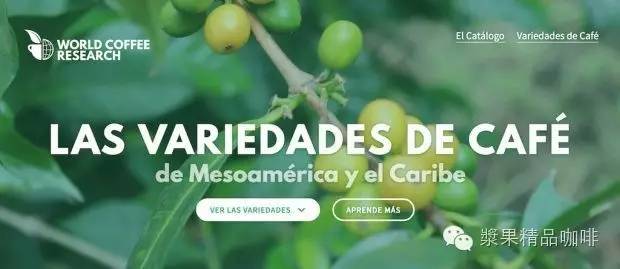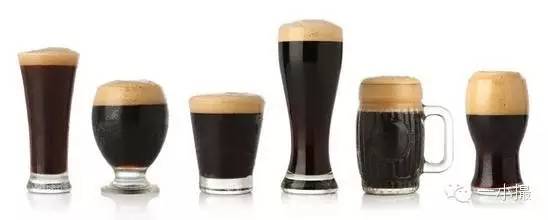Analysis of caffeine content in ice drop coffee and all kinds of coffee
Ice drop of coffee
History
On the Indonesian island of Java, which was once a Dutch colony in the 17th century, it is said that the coffee extraction method used here was introduced by Dutch businessmen, so it was named Dutch coffee Dutch Coffee. This kind of coffee drips with ice water for a long time, so it is also called "coldbrew coffee cold" or "water drip coffee".
In 1699, the Dutch planted coffee in their colony of Indonesia, writing down a significant amount in coffee history. Since then, the coffee trade in Indonesia and the Netherlands has opened up coffee routes from Asia to Europe. Dutch people who often sail to and from Eurasia have invented this extraction method that can be preserved for a long time in order to make it easier to drink coffee on board. The prototype of ice drop coffee. Another theory is that Dutch immigrants who once lived in Indonesia invented the extraction method to suppress the strong sour taste of coffee. Although it is impossible to tell which statement is more accurate, there is no doubt that both speak of the characteristics of iced coffee: easy to keep, soft taste and low acidity.
Principle
The principle of ice-brewed coffee is that the coffee itself is compatible with water and is extracted bit by bit by melting ice. The coffee extracted has different flavor according to the roasting degree, water quantity, water temperature, droplet speed, grinding thickness and other factors.
Discussion: is the caffeine content of ice drop coffee low? How to make ice drop coffee?
A fixed amount of powder. Moderate grinding, with ice melting water, slowly drop 40 drops a minute, let the water molecules infiltrate the coffee powder, dissolve the alcohol and fragrance in the coffee, usually drink the ice drop coffee in the mouth, the aroma will slowly come out, if you do not drink the coffee smell should be hot coffee and then chilled, ice drop coffee temperature, to your mouth he is at room temperature, the general aroma is not obvious. When you drink ice drop coffee, you have to feel the mellow smell in your mouth before it comes out slowly. It's the hottest time for this cup of coffee. It is best to drop the ice for 24 hours, the more cold, the better alcohol can not be fermented into acid. Is the caffeine content of ice drop coffee low? The widely legendary saying that "ice drop coffee is decaf coffee" has not been scientifically verified. Although it is extracted with ice water, the caffeine content of ice drop coffee is not lower than that of ordinary coffee. Not all iced coffee is "soft and not bitter". You have to use the right coffee beans and the right way to do it. If you want to make a good ice drop coffee, you can't do without all three: the right coffee beans, the right production method, and the right ice drop coffee machine. Some guests said that they had drunk sour and exciting ice droplets. Why? There are many reasons-the low quality of coffee beans, improper roasting, too shallow roasting, uncontrolled production process and improper storage will affect the taste of coffee.
Caffeine content
Caffeine is a xanthine alkaloid compound, which is a kind of stimulant.
Chemical formula: C8H10N4O2 (trimethylxanthine)
Function: 1. Natural insecticide: found in the fruits, leaves, and seeds of more than 60 plants, insects can cause paralysis and achieve insecticidal effect after eating these plants.
two。 Central nervous system stimulant: can temporarily dispel drowsiness and restore physical strength. Widely used in drinks and medicines for refreshing and relieving fatigue. Caffeine is widely used in daily life, coffee, chocolate, cocoa, tea all contain caffeine, although its name may be different, and its nature is not different. There are many people who get into the habit of drinking coffee but do not quite understand the relationship between coffee and caffeine. Here is a simple classification for reference:
1. Different varieties lead to a variety of caffeine content: generally speaking, Arabica, which belongs to boutique coffee, contains less caffeine, accounting for only about 1.2%, while Robusta sturdy beans have a relatively high caffeine content of about 2.4% or about 2.4%.
two。 The temperature and time of baking lead to different caffeine content: roasting destroys the cells of coffee cherries, and the higher the temperature and the longer the roasting time, the lower the caffeine content in coffee cherries. As a result, deep-roasted coffee beans may contain less caffeine than light roasting.
3. The way and time of brewing leads to the release of caffeine: there are many different ways of brewing coffee, and the time of brewing is also different. When coffee powder and hot water dissolve, caffeine is released, and the longer it takes to brew, the more caffeine is released, so fast-brewing espresso (Espresso) contains less caffeine than hand-brewed and siphon coffee.
American coffee bar > coffee coffee bar > siphon method > mocha 81 dripping method > ice drop method, when the addition amount was 10086L, the effect of trapping DPPH free radical was 67.56%, 59.29%, 52.47%, 46.65%, 43.79% and 14.41%, respectively. When the addition amount was 2586L, the effect of catching free radicals was 50.56%, 49.31%, 43.48%, 40.30%, 24.66% and 23.78%, respectively, and the 0.5 mg/mL mannose (mannitol) captured by known free radicals was high. As for the content of total polyphenols, the order was American > siphon > mocha > drip > ice drop, and their contents were 4.138 86g/86L, 3.181 86g/86L, 2.471 86g/86L, 2.317 86g/86L, 2.034 86g/86L and 0.842 86g/86L, respectively. The contents of quercetin were expressed by quercetin phase quantification (quercetin equivalent mM), which were 0.944 mM, 0.740 mM, 0.408 mM, 0.477 mM, 0.176 mM and 0.104 mM, respectively. As for the caffeine content of various coffee brewing methods, the order is American style > mocha 81 style > siphon method > drip method > ice drop method, which are 0.947 86g/86L, 0.699 86g/86L 81 0.672 86g/86L, 0.592 86g/86L, 0.410 86g/86L and 0.330 86g/86L respectively. The results showed that the free radical capture effect of different brewing coffee extracts was positively correlated with the degree of browning, polyphenol or ketone content, solid content and caffeine content, and the coffee solution extracted by American or brown coffee was the highest.

Important Notice :
前街咖啡 FrontStreet Coffee has moved to new addredd:
FrontStreet Coffee Address: 315,Donghua East Road,GuangZhou
Tel:020 38364473
- Prev

The World Coffee Research Association publishes the Compendium of Coffee species
The World Coffee Research Association (World Coffee Research), hereinafter referred to as WCR, issued the Coffee Tree species of Central America and the Caribbean, an unprecedented Arabica tree species compendium. You can download it from the following website: https://varieties.worldcoffeeresearch.org this compendium was written by WCR and designated partner Coffee Farm. Can be on the net
- Next

Coke + coffee beans? Coffee processing method: analysis of coffee beans treated with Hawaii-cola
Hawaii State is the only archipelago state in the United States, consisting of 132 islands in the central Pacific Ocean. The capital is located in Honolulu on Oahu. Kona coffee from Hawaii Kona coffee beans made in Hawaii have the most perfect appearance, their fruit is extremely full and bright, and they are the most beautiful coffee beans in the world. Coffee is smooth and fragrant, with
Related
- Customers have "changed" Manner's new products! Shop assistant: Please don't mess around!
- Remove sockets in customer areas at Starbucks stores?! Netizen: I won't go if I really tear it down
- What is the difference between the taste steps of sun-dried coffee and washed coffee? Why is sun-cured coffee sweeter and washed coffee sour?
- The recipe for salty grapefruit dirty is revealed! Coffee Festival salty grapefruit dirty coffee making materials parameters ratio milk share!
- How about the flavor of Sunlight 74158 at Sidamo Banshaha Mathieu Processing Factory in Ethiopia? 74158 Share the proportion of coffee brewing parameters!
- What effect does Italian American coffee with filter paper have? Will coffee taste better if it is put on filter paper at the bottom of the powder bowl?
- What is the color difference in coffee beans? What are the characteristics of honey processed coffee beans? Why are the anaerobically treated coffee beans uneven in color?
- How does novice Xiaobai quickly get started and make coffee? Newbies learn to make coffee by hand and share the specific steps and process process!
- Costa tea has a shelf life of 100 years?! Expert: Unable to verify
- It's a huge uproar! American milk addition was rejected by Manner employees?!

